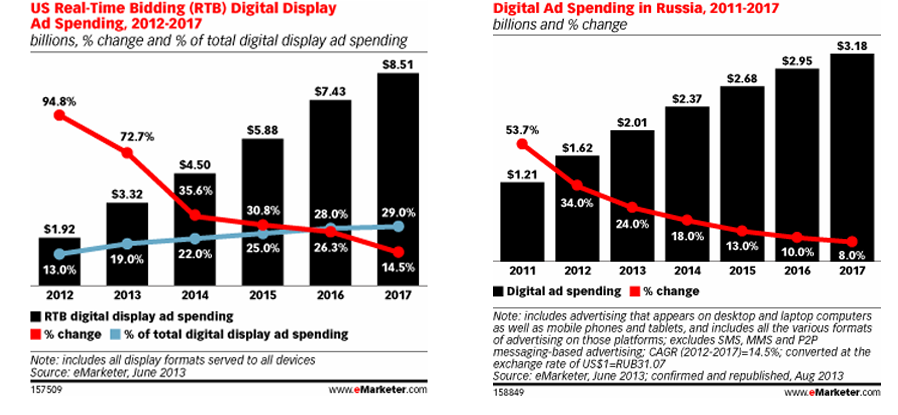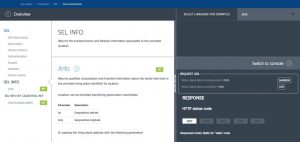Programmatic advertising is one of those phenomena of the new technology, one of those facts that confirm what is already a reality: that there are many processes that are better in hands of an algorithm. We are not talking about assembly lines, where machinery and robots have been helping to create products for years… No, no, we mean professional business, with decision making and risk assessment processes. This is about a true Terminator-style Rise of the Machines.
Advertising is changing in an amazing way. The old rules of the business have taken a 180 degree turn. The goal now is to buy audiences, not ad spaces. And here is when the accuracy of Big Data, the power of the machines and the know-how of developers comes into play.
Programmatic advertising is the process by which advertisers buy advertising by real-time bidding (RTB) through various actors that facilitate the process: Ad Exchanges, auction houses that offer impressions to the best bidder; Demand Side Platforms (DSPs), technology providers that allow price optimization thanks to Big Data (they handle large amounts of data about users: profiles, conversion history, target, etc.); Data Partners, which provide the data; the advertiser’s Trading Desk team, which works directly with the auction houses; and the Sell Side Platforms (SSPs), which maximize the performance of advertising space for the media. You can see the process in this video:
Investment of the big players, a sign of success
A study of IDC states that the expected growth for real-time bidding advertising is 59% per year until 2016, and that its turnover will reach 40% of all mobile and display advertising by 2017.
A similar report from eMarketer predicted in 2013 some spectacular investments: 29% of display ad spending in the US in 2017 will be on real-time bidding, more than 9 billion dollars. eMarketer made a chart which compares spending in display programmatic advertising with total investment:

Data provided by IAB Spain show that 15.7% of the advertising sold in Spain in 2013 was already through this programmatic formula, while the remaining 84.3% through negotiated sale. It seems that the market is starting to embrace this type of advertising.
If large companies are interested, it means there is business
In fact, several major players in this market have increased their interest in these new processes due to their great results. The division of third party display ads of AOL already represents a 38% of the value of the company. The sales of this division increased by 44% (up to 215 million dollars) in the third quarter of this year thanks to its programmatic platform for different devices (tablets, mobile phones and desktop computers) and in different formats (videos, contextual search, etc.).
Kellogg’s, for example, recognizes that it has obtained great results with programmatic advertising. Its Director of Digital Strategy, Bob Arnold, said in an interview in Forbes that some brands have seen the ROI (return on investment) of its campaigns increase by six. “Programmatic buying is more efficient, more effective and more transparent (…) because it’s automated and eliminates expensive costs.” And it ensures that Google, Facebook, Microsoft and Yahoo! invest heavily in this new way of buying and selling digital advertising.
Big Data: money, money… developers, developers…
The two largest competitors in digital advertising, Google and Facebook, are already engaged on a RTB war. Scott Spencer, Director of Product Management for DoubleClick Ad Exchange, Google’s advertising platform, is clear about the present and the future success of programmatic advertising: with it, buyers are allowed to choose what they want and media editors to have a complete inventory. A competitive and profitable market.
To compete with the search engine, Facebook has been taking some interesting steps, not only closing agreements and buying companies with experience in programmatic advertising (such as LiveRail), but also focusing great part of the work of its Preferred Marketing Developer center (which helps companies to find software developers to run campaigns on the social network programmatically and on a large-scale) in cost optimization and higher ROI.
Why is programmatic advertising the future of the market?
The main advantage of programmatic advertising is the one attracting large advertisers: better performance. Those times when brands wanted to place their ads in the best media are over; now they look for sites related to their interests. The winning combination is: right message, right person, right time.
The fact that the price is decided on a real-time bid gives security to advertisers that whoever wins the advertising space is because a more competitive price was offered. The system is much more transparent than the negotiated sale. In addition, as the system is automatic, protected by algorithms and data, it reduces costs and allows to control the process by modifying technical parameters. Advertising has already become the business of Big Data and developers.



























